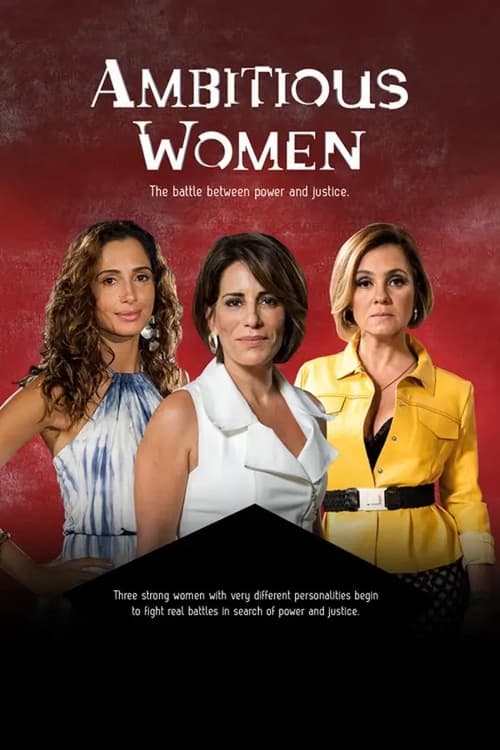
Ask Your Own Question
What is the plot?
In Episode 161 of "Edge of Desire," the episode opens with a tense atmosphere as the main character, Aditi, is seen pacing in her room, visibly anxious about the upcoming confrontation with her estranged father. The camera captures her furrowed brow and clenched fists, emphasizing her internal struggle. She recalls painful memories of her childhood, which fuels her determination to confront him about the abandonment she felt.
The scene shifts to a bustling café where Aditi's father, Rajesh, is meeting with a business associate. Rajesh appears confident and composed, but there are subtle hints of guilt in his demeanor as he glances at his phone, waiting for a message from Aditi. The associate discusses a lucrative deal, but Rajesh's mind is clearly elsewhere, indicating his internal conflict regarding his relationship with Aditi.
Back at Aditi's home, she receives a text from Rajesh asking to meet. Her heart races as she contemplates the implications of this meeting. She debates whether to go, reflecting on the hurt he caused her, but ultimately decides that she needs closure. The scene captures her resolve as she straightens her posture and prepares to leave, her expression shifting from uncertainty to determination.
The next scene takes place at a park where Aditi and Rajesh meet. The atmosphere is charged with tension as they exchange awkward pleasantries. Aditi's voice trembles slightly as she confronts him about his absence during her formative years. Rajesh attempts to explain his choices, but Aditi interrupts, her emotions boiling over. She accuses him of prioritizing his career over his family, and the camera zooms in on her tear-filled eyes, showcasing her vulnerability.
Rajesh, taken aback by her outburst, struggles to articulate his feelings. He reveals that he thought he was providing for her by focusing on his work, but Aditi counters that material wealth does not replace emotional support. The argument escalates, and Rajesh's frustration surfaces as he raises his voice, leading to a heated exchange. The scene is filled with raw emotion, capturing the pain and anger both characters feel.
As the confrontation reaches its peak, Aditi storms off, leaving Rajesh standing alone in the park, regret etched on his face. The camera lingers on him as he watches her walk away, a mix of sorrow and realization dawning on him. This moment marks a turning point for Rajesh, who begins to understand the depth of his daughter's hurt.
The episode then transitions to Aditi at home, where she reflects on the confrontation. She sits on her bed, surrounded by childhood photos, and her expression shifts from anger to sadness. She grapples with the idea of forgiveness, contemplating whether she can ever truly let go of the past. The internal conflict is palpable as she wipes away tears, showcasing her emotional turmoil.
Meanwhile, Rajesh is shown in his office, staring blankly at his computer screen. He is haunted by memories of Aditi as a child, and the weight of his decisions begins to crush him. He picks up his phone, contemplating reaching out to her, but hesitates, unsure of how to bridge the gap that has formed between them.
The episode culminates in a powerful moment where Aditi decides to take control of her narrative. She picks up her phone and sends Rajesh a message, expressing her desire to meet again, but this time on her terms. The scene captures her newfound strength as she takes a deep breath, ready to face whatever comes next.
The final shot of the episode shows Rajesh receiving the message, his expression a mix of hope and apprehension. The screen fades to black, leaving viewers with a sense of anticipation for the next chapter in their tumultuous relationship.
What is the ending?
In the ending of "Edge of Desire," Season 1, Episode 161, the main characters face the culmination of their emotional struggles and conflicts. The episode concludes with a series of confrontations and revelations that lead to significant changes in their relationships and futures.
As the episode unfolds, we see the characters grappling with their choices and the consequences of their actions. The tension builds as secrets are revealed, leading to a dramatic confrontation that forces the characters to confront their true feelings and desires. By the end, some characters find resolution and clarity, while others are left with uncertainty about their paths forward.
The episode opens with a tense atmosphere in the living room of the main character's home. The air is thick with unspoken words as the characters gather, each one carrying the weight of their secrets. The camera pans across their faces, capturing the anxiety and anticipation that fills the room.
As the scene progresses, the protagonist, whose internal conflict has been a central theme throughout the series, stands up to address the group. Their voice trembles slightly, revealing their vulnerability. They express their feelings of betrayal and confusion, which resonates deeply with the others present. The emotional stakes are high, and the tension is palpable as the characters react to the protagonist's outburst.
In the next scene, we shift to a private conversation between two key characters, who have been at odds for much of the season. The setting is intimate, a quiet corner of a café where they can speak freely. Here, the character who has been harboring guilt finally confesses their role in the misunderstandings that have plagued their relationship. The other character listens intently, their expression a mix of hurt and understanding. This moment of honesty serves as a turning point, allowing them to begin mending their fractured bond.
Meanwhile, another subplot unfolds as a secondary character grapples with their own choices. They are seen pacing in their room, reflecting on the advice given by a mentor earlier in the episode. The internal struggle is evident as they weigh the pros and cons of a life-changing decision. The camera captures their conflicted emotions, highlighting the fear of the unknown versus the desire for change.
As the episode nears its climax, the characters converge at a pivotal location--a park where many of their earlier interactions took place. The atmosphere is charged with unresolved tension. Here, the protagonist confronts the antagonist, leading to a heated exchange that lays bare their grievances. The dialogue is sharp and emotional, with both characters revealing their vulnerabilities. The confrontation serves as a cathartic release, allowing them to express their pain and frustration.
In the final scenes, the characters begin to find their resolutions. The protagonist, after much reflection, decides to take a leap of faith in their personal life, choosing to pursue a relationship that had been fraught with complications. This decision is met with mixed reactions from the group, but ultimately, it signifies their growth and willingness to embrace change.
The episode closes with a montage of the characters moving forward in their lives. One character is seen packing their bags, symbolizing a fresh start, while another is shown reaching out to mend a broken friendship. The final shot lingers on the protagonist, who stands at a crossroads, looking hopeful yet uncertain about the future. The screen fades to black, leaving viewers with a sense of both closure and anticipation for what lies ahead.
In summary, the fates of the main characters are intertwined with their emotional journeys. The protagonist embraces a new beginning, the conflicted character finds clarity, and the antagonist is left to reflect on their actions. Each character's resolution highlights the themes of desire, conflict, and the complexities of human relationships, setting the stage for potential developments in future episodes.
Is there a post-credit scene?
In "Episode 161" of "Edge of Desire," there is indeed a post-credit scene that adds an intriguing layer to the episode's narrative.
As the credits roll, the screen fades back in to reveal a dimly lit room where a figure is seated at a desk, shrouded in shadows. The atmosphere is tense, with the faint sound of a clock ticking in the background, emphasizing the weight of time and secrets. The camera slowly zooms in on the figure, revealing it to be a character who has been a mysterious presence throughout the season, known for their manipulative tendencies.
The character is seen writing in a leather-bound journal, their expression a mix of determination and anxiety. As they write, snippets of their thoughts are revealed through voiceover, hinting at a deeper plan that intertwines with the main characters' lives. Phrases like "the final move" and "they won't see it coming" suggest a looming confrontation that could change everything.
Suddenly, the character pauses, looking up as if sensing they are being watched. The tension escalates as the camera shifts to a close-up of their eyes, filled with a mix of ambition and fear. The scene ends abruptly with a sharp cut to black, leaving viewers with a sense of foreboding and anticipation for what is to come in future episodes.
This post-credit scene effectively sets the stage for upcoming conflicts and deepens the intrigue surrounding the character's motivations, ensuring that the audience is left eager for more.
How does the character's backstory influence their actions in this episode?
The backstory of one of the main characters is revealed through flashbacks, showcasing their struggles with trust and abandonment. This history deeply influences their decisions in Episode 161, as they grapple with the fear of opening up to others, which ultimately affects their interactions with the other characters.
What emotional conflict does the protagonist face in this episode?
The protagonist experiences a profound internal conflict in Episode 161, torn between their desire for love and the fear of being hurt again. This struggle is depicted through their interactions and the choices they make, illustrating their journey toward self-acceptance and the courage to embrace vulnerability.
What significant event occurs between the main characters in Episode 161?
In Episode 161, a pivotal confrontation takes place between the two lead characters, where unresolved feelings and past grievances come to the forefront. The tension escalates as they confront their emotional barriers, leading to a moment of vulnerability that changes the dynamics of their relationship.
What role does the supporting character play in the events of Episode 161?
A supporting character steps in as a mediator during a heated argument between the main characters. Their attempts to provide perspective and calm the situation highlight their loyalty and the emotional stakes involved, showcasing their importance in the narrative and the impact they have on the main characters' decisions.
How does the setting influence the mood of Episode 161?
The setting in Episode 161 plays a crucial role in establishing the mood, with dim lighting and a rain-soaked backdrop that mirrors the characters' emotional turmoil. The atmosphere enhances the tension and drama, making the characters' confrontations feel more intense and their moments of connection more poignant.
Is this family friendly?
"Edge of Desire," season 1, episode 161, contains several themes and scenes that may not be suitable for children or sensitive viewers.
-
Emotional Turmoil: The episode features intense emotional conflicts among characters, including heartbreak and betrayal, which may be distressing for younger audiences.
-
Romantic Tension: There are scenes that depict romantic relationships with underlying tension, which may include suggestive dialogue or situations that could be uncomfortable for some viewers.
-
Family Conflict: The episode explores themes of familial discord, including arguments and confrontations that could be upsetting for sensitive viewers.
-
Dramatic Revelations: There are moments of shocking revelations that lead to emotional breakdowns, which may be intense for younger viewers.
-
Mature Themes: The narrative touches on adult themes such as infidelity and personal sacrifice, which may not be appropriate for all audiences.
These elements contribute to a dramatic atmosphere that may not be suitable for children or those who are sensitive to emotional distress.





























































